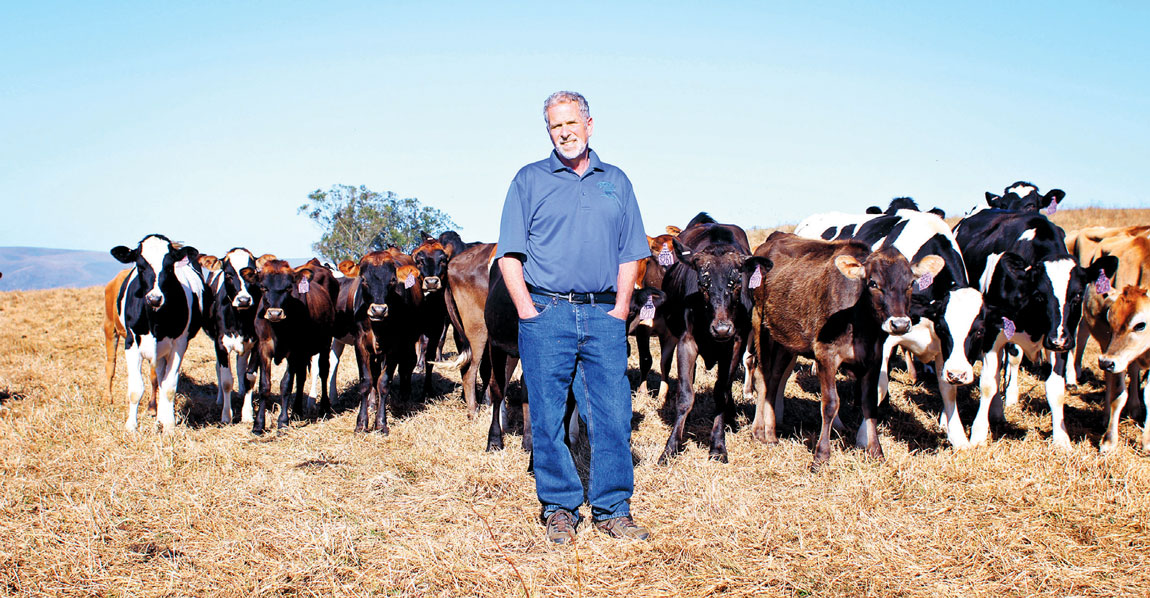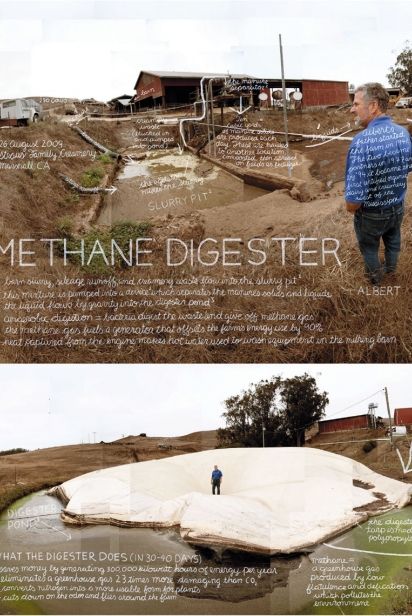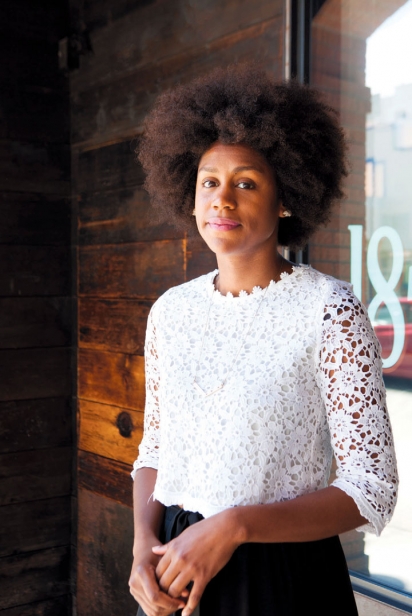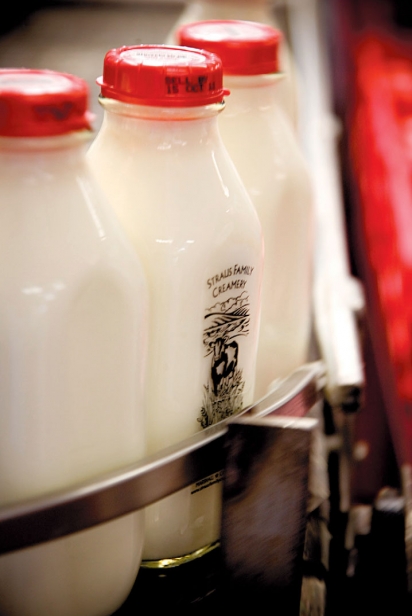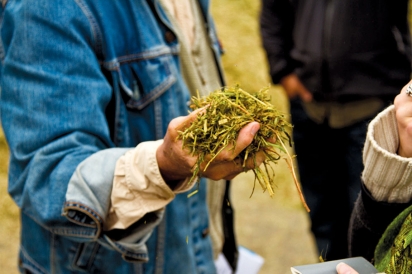The True Cost of American Food
Straus Family Creamery—A Pioneer in Tipping the Scales
Dairy farmer Albert Straus cares about cow farts so you don’t have to. Seriously. Straus is obsessed with the impact that bovine belches have on the environment.
Who knew that cow flatulence was such a big deal in dairy farming?
There’s no covering the stink: While carbon dioxide gets most of the bad press, cow poo and wind play a significant role in global warming, too. Studies link enteric fermentation (that’s a geeky name for methane emissions—including cow gas) to climate change.
Consider this: Agriculture contributes 8% to total California greenhouse gas emissions, according to the state’s Air Resources Board. Digging deeper: Methane from microbial fermentation represents 30% and manure management 26% of total methane emissions in the Golden State, according to 2016 board data.
Straus has long been an industry leader in trying to lower these emissions and their negative effect on the environment. For more than a dozen years, his Marshall-based organic dairy Straus Family Farm, has made power from poop, courtesy of a methane digester that turns methane gas from milk-making animals into electricity. His farm creates enough renewable energy to power the dairy, heat water, charge his little blue electric car (a Nissan Leaf, for those who care) and other farm vehicles and feed some electricity back into the grid. Sounds good, right?
Straus would like to do better. His ultimate goal: to run a zero-carbon- footprint farm system. To that end, his dairy operation is part of the Marin Carbon Project, a consortium of groups trying to combat climate change through preventive agricultural practices. Straus points to scientific support for what’s known as carbon sequestration (a fancypants term that essentially means adding carbon back into the soil versus releasing it into the atmosphere). On the farm, Straus sequesters carbon by applying a thick layer of compost on pastures, planting windbreaks and hedgerows and using organic grazing methods.
Through these practices, says Straus, the farm projects a reduction in carbon dioxide equivalent emissions by approximately 2,000 metric tonnes per year. That’s good for the environment and makes for a more productive farm system.
“Everything we do at Straus revolves around how we can minimize our environmental impact, build soils, enhance animal welfare, provide for farm workers and create positive change,” says the lifelong dairyman, a second-generation family farmer whose German father and Dutch mother—both Jewish—escaped Europe prior to World War II and found peace and freedom on a farm overlooking Tomales Bay in West Marin.
One more thing: Lucky for us, the former Cal Poly dairy science major has always had a soft spot for ice cream.
Edible Marin & Wine Country readers are likely no strangers to the Straus brand. The company produces premium products at the Straus Family Creamery, located just a few miles from Straus’s farm. Served by nine local dairy farms, including his own, the creamery makes milk, cream, yogurt, ice cream and butter. The Straus label has quite the cult following among the sustainable, organic, non-GMO, anti-additives food set. That’s because the Straus brand has long ticked off all those boxes.
The company’s cream-top, pasteurized but not homogenized milk in reusable glass bottles is a familiar sight in the refrigerator sections of whole food and natural grocery stores. As is the creamery’s lusciously rich European-style yogurt, thick Greek yogurt and tangy sour cream. Straus ice cream—11 flavors and counting—comes sans stabilizers, other than egg yolk. The company’s ice cream base is featured at the wildly popular Bi-Rite Creamery in San Francisco. His small-batch butter is enjoyed by both professional chefs and home cooks for its high fat content and low moisture.
Naturally, compared to conventional dairy, none of these products comes cheap. The average retail price of a half gallon of milk is $5; a 32-ounce tub of Greek yogurt clocks in around $7.99, as does a quart of vanilla bean ice cream.
That’s not a concern for those among us who have drunk the creamtopped milk. Such consumers appreciate the invisible or hidden costs associated with industrialized food production and are willing (and able) to pay more for delicious food produced with planetary and human health in mind.
Straus is a poster child for the “real cost of food” movement. Little wonder, then, that researchers want to figure out how to quantify the benefits and costs of his agricultural practices. Case in point: He was invited to be a part of a sustainability assessment conducted by agroecology researcher Harpinder Sandhu from Flinders University in South Australia. The findings from this preliminary research, which attempts to measure real costs and benefits in a new way, were first presented at The True Cost of American Food conference in San Francisco last April hosted by the Sustainable Food Trust, a United Kingdom–based nonprofit organization.
Conference tackles hidden costs head on
The brainchild of the trust’s chief executive, Welsh dairy farmer and cheddar cheesemaker Patrick Holden, the conference was the third in a series of events designed to get a better handle on the true cost accounting associated with industrialized food.
“The American food system has hidden costs and they are substantial,” says Marin resident Diana Donlon, who runs the Soil Solutions program for the Center for Food Safety in San Francisco. “The conference assembled world-class experts who brought many of these costs to light—including the social costs of antibiotic use in confined animal feed operations and the public health costs of diet-related illnesses like diabetes and obesity.”
Still, it’s tricky to try to calculate the exact monetary value of these so-called externalities. “The industrial food system exacts an unsustainable toll on our natural world,” adds Donlon. “The true cost framework of trying to equate everything into dollars and cents is something people can easily grasp.”
Make no mistake: This was a super wonky meet up. And the Sandhu- Straus panel analyzing case studies of three different U.S. farms was no exception. Straus represented a cluster of four organic dairy farms, including his own, that serve the Straus Family Creamery. Also in the mix: a conventional corn and soy operation in Minnesota, and a wildly unconventional diversified livestock ranch in Virginia. Polyface Farm is perhaps best known for its celebrity spokesman (or as celebrity-like as American farmers get), conference panelist and beyond-organic farmer Joel Salatin, a self-described Christian-libertarian-environmental-capitalist-lunatic.
Back to Sandhu’s research: The report set out to monetize four categories in a farm via a complex set of equations that measure production benefits and their market value, environmental benefits, social benefits and environmental costs. The findings from the dairy farm cluster: The mean “farm gate” price (that’s the pay price from the creamery to the dairy farmers) of the four farms came to $3.44 per gallon of milk. The mean combined environmental benefits of the four farms added up to $193 per acre per year and the combined mean for social benefits equaled $494 per acre annually. The annual environmental cost totaled $599.
According to Sandhu’s accounting: the environmental price tab on that $3.44 gallon of milk is 25 cents. Its combined social and environmental benefits amount to 28 cents. What to make of this data?
“It means organic milk supplied to Straus Creamery is generating more benefits for society in terms of carbon capture and nutrient management than the damages to human health and the environment,” explains Sandhu. He’s a fan of Straus’ methane digester and thinks other local farms should adopt this practice, too. “Our results indicate this methane digester is of huge value in terms of reducing carbon emissions and net environmental and social costs,” he says.
The report provides a benchmark, says Straus, or preliminary metrics for attempting to quantify a complex question: What “should” a gallon of milk cost?
“Our milk is not expensive enough,” he joked at the conference after hearing Sandhu speak. “This research invigorates me to keep innovating to make a better farm system.” Straus, who has long been a catalyst for change, would like to see widespread adoption of environmentally friendly practices within the industry and relishes creating healthy models others can replicate.
Let’s circle back to carbon sequestration. Science suggests it’s a significant weapon against climate change. What is it exactly? Here’s a brief primer from soil conference panelist and Marin Carbon Project lead scientist Whendee Silver:
“Carbon sequestration is the increase in carbon storage in soils, generally through increased plant growth,” explains Silver, who is also a professor of ecosystem ecology and biogeochemistry at the University of California, Berkeley. “As plants grow, they pull carbon dioxide out of the atmosphere to make their tissues [remember photosynthesis?]. Some of the carbon in their tissues ends up getting trapped in the soil, forming soil organic matter. This removal of carbon from the atmosphere and storage in the soil helps to slow climate change.” [Editor’s Note: For more information on carbon sequestration and the Marin Carbon Project, see the Fall 2015 issue of Edible Marin & Wine Country.]
So farmers like Straus are using composted organic waste as a soil amendment or organic fertilizer to increase soil carbon sequestration, says Silver, adding that this kind of landfill diversion helps to lower greenhouse gas emissions.
This is exciting stuff for Straus. “I’ve always liked the challenge of making things more self sufficient and less detrimental to the planet,” says the 61-year-old, who is checking out succession farming models in other parts of the world, including New Zealand. (Note to investors: The farm, says Straus, will stay in the family and is not for sale, unlike several local cheese operations.) “I’m working on a fully electric truck and a full-scale tractor powered by the cows. Finally, the technology is catching up with what I want to do.”
This holistic approach to agriculture and accounting is critical to bringing about systemic change in America’s broken food system, says vegetarian rancher Nicolette Hahn Niman, author of Defending Beef and Righteous Porkchop, who moderated a conference panel on animal fat. “This conference was very solutions oriented,” adds Hahn Niman, who lives in Bolinas with her husband, Bill Niman, the godfather of the good meat movement (think grass-fed, antibiotic-and hormone-free livestock). Niman is the co-founder of BN Ranch, where he raises happy cattle with ocean views. “There’s no one-size-fits-all answer to some of the tough questions we need to ask about our current food system. But at least people were asking.”
Consumers matter
What do these complex calculations and abstract ag ideas mean for consumers? It’s a way to try and quantify invisible costs not reflected at the cash register that are detrimental to the health of people, animals and the planet. Holden and his Sustainable Food Trust followers seek to spotlight alternative ag as a bargain, in comparison to conventional farming practices.
“We should all care about the true cost of American food—because we literally are all paying for it,” says Diet of a Hot Planet author Anna Lappé, who moderated a panel on the real cost borne by American food workers. She rattles off a short list of concerns: “We’re paying for it in skyrocketing health care premiums because of the chronic diseases sweeping the country, largely connected to the bad food and sugary drinks that flood the marketplace. We’re paying for it in the high cost of the environmental damage from the widespread, indiscriminate use of herbicides, fertilizers, pesticides and fungicides. We’re paying for it in the growing threat of antibiotic-resistant bacteria that is largely being driven by the routine use of antibiotics in factory farming. We’re paying for it in the reality of the millions of food workers who are so underpaid that they must rely on government assistance just to put a roof over their head, feed their families or cover their health care costs.”
Shakirah Simley, community programs manager for Bi-Rite Market in San Francisco, a True Cost of Food conference sponsor, agrees. Simley, who also spoke on a panel about the future of food, notes that a lot of hands go into food—from the farm field and food distributor to the retail floor and restaurant kitchen. And many of those hands are black or brown. Traditional food movement leaders could learn from and join forces with successful recent social movements attempting to bring about change. Cases in point, says Simley: The labor activists behind the fight for a $15 minimum wage and racial justice advocates behind Black Lives Matter. These dual campaigns for social change and racial equality, she notes, aren’t separate from discussions on the real cost of food, but an integral, intertwined part of the narrative.
How to translate these “true costs” into day-to-day life? That’s always been a part of the Straus mission, from education to advocacy to marketing. For example, the company produces a barista milk that is partially homogenized for the coffee culture set; when steamed, it makes for a creamier foam than their regular milk. The company touts its carbon-friendly benefits.
The owners of Paramo Coffee in San Francisco did the milk math. The dairy product represents 60% to 70% of the carbon footprint of a cup of Joe that contains just a few tablespoons of creamer, according to Paramo. For a latte, it’s as much as 90%. So at the company’s 9th Street café they use Straus barista milk and donate 5 cents from every drink to the Marin Carbon Project. “We’re trying to get concrete connections between consumers and farming practices, showing that farms really can make a difference to the environment and consumers can directly support their efforts,” explains Straus.
Perhaps there will come a day when consumers ask “Is this carbon-beneficial milk?” just as they now routinely query if produce or dairy is organic.
Speaking of organic: About 80% of the dairies in Marin and Sonoma counties are now certified organic. Straus expects that to be 100% soon. Organic milk has been a big profit maker for dairy farmers. “This is no longer a niche thing. It’s the future of food,” says Straus on site at the creamery in July, where he’s taste-testing a reformulated banana ice cream, a personal favorite. He deems it “lacking in banana flavor.” Back to the drawing board.
While Straus won’t talk actual numbers, he’s willing to say that the company has experienced double-digit growth for the past two decades. It hasn’t always been so: For the first couple of years he farmed Straus didn’t take a salary. The company has weathered such challenges as the prolonged drought, which has made reclaiming and recycling water (about 90% of what the company uses) a top priority. He’s eager to do more: While Straus has lowered the plastic content of his yogurt tubs, he foresees a day soon when his product is out of plastics altogether.
Straus recently announced plans, not finalized at press time, to consolidate operations now in Marshall and Petaluma into one central, green-friendly building in Santa Rosa. The 87,000-square-foot facility would contain production, distribution and offices for the creamery, which currently has about 140 employees. Another six Straus workers handle the farm operation; Straus provides on-site housing there. The new space would also provide opportunities to showcase the creamery’s process and products and educate consumers on site.
Straus remains convinced that a return to a regional system of growing and producing is the right way to heal this country’s ailing food system. He shared his alternative perspective the week French dairy company Danone agreed to buy U.S. organic-foods producer WhiteWave—which includes products lines like Horizon organic milk, Wallaby organic yogurt and Earthbound Farm packaged salad—for $10.4 billion.
Straus rejects a national or international approach to agriculture. He thinks a lot about reducing food miles. He’s not in the business, he says, to produce products that can last a long time so they can be transported great distances or sit for extended periods on supermarket shelves. It’s just an unhealthy way to do business, he says.
“We’re not trying to push the farming system so hard that it collapses. We’re trying to sustain it for future generations to come.”


